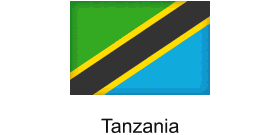 Tanzania: Tour Operators names Dr Manongi as conservation hero
Tanzania: Tour Operators names Dr Manongi as conservation hero
THE Ngorongoro Conservation Area(NCA)'s Commissioner, Dr Freddy Manongi has been recognised by the tourism stakeholders as the green champion.
Tanzania Association of Tour Operators (TATO) Chief Executive Officer (CEO) Mr Sirili Akko said over the weekend that Dr Manongi is an unsung conservation hero, whose competency and bearing had shaped the Ngorongoro conservation area more than ever before.
Courtesy of his painstaking efforts in terms of protecting, expanding and marketing, Ngorongoro has been voted as the best conservation area for outdoor enthusiasts, raising the country's profile as the premier tourism destination. The Ngorongoro conservation area formed the richest tourism circuit north of Tanzania has featured prominently among the best 25 national parks from across the world, thanks to traveller's views through the world's largest travel platform, a Trip Advisor's platform.
"We don't have a culture of celebrating our champions, but I think it's high time we break this norm. To start with, we are recognising Dr Manongi for his exemplary work in sustainable conservation," Mr Akko told a press conference in Arusha.
Mr Akko said that tour operators are satisfied by his initiatives and feel that he is an unsung hero who not only worked extremely hard to foster ecology conservation at the highest level, but also reinstated professionalism and discipline into the prime conservation body.
Dr Manongi is the brain behind the strategy that saw an endorsement of the 'Ngorongoro-Lengai into the Global Geopark list by the United Nations Educational Scientific and Cultural Organization (UNESCO). Geo-tourism is a new concept in tourism and that sustains or enhances the distinctive geographical character of a given precinct including the area's environment, heritage, aesthetics, tradition, culture, and the well-being of its residents and Dr Manongi built the case that the Ngorongoro-Lengai entity ticks all boxes.
Indeed, as it occurred, the Ngorongoro Lengai not only became the first Geopark in East Africa, but also the pioneer site for geo-tourism in Sub-Saharan Africa.
The Ngorongoro Lengai Geopark is the second in Africa after the 'M'Goun Geopark,' in Morocco and encompasses the three districts of Ngorongoro, Karatu, and Monduli in Arusha region.
The Geopark lies between Serengeti National Park in the North and North-West, Lake Natron to the East, the left arm of the Great Rift Valley to the South, and Maswa Game Reserve to the West, covering 12,000 square kilometers of rocky hills, lengthy underground caves, lake basins and hominid discovery sites.
The Ngorongoro-Lengai Geopark comprises ancient Datoga tombs; Caldera Route covering, among other sites, Irkepus Village, Old German House, Hippo Pool and Seneto springs, the active Oldonyo-Lengai Volcano and the Empakai Crater.
Dr Manongi is also celebrated for his efforts to improve the crucial infrastructures together with a marketing campaign, multiplying the number of tourists, boosting revenues and the package for corporate social responsibility.
Roads to descend and ascend in and out of the Crater are among the key infrastructures that have undergone major constructions and renovations to offer tourists a hustle-free trip within the World heritage site.
For instance, the 4.2 km long lane-linking Seneto to the Ngorongoro Crater has been constructed by using non-bitumen materials.
The eco-friendly hard stone materials have been used in paving the roads to protect the environment within the Conservation Area.
In its efforts to maintain tourism services, NCAA had modernized its toilet services at the entry and exit gates as well as other frequented visitor's areas including the camping and picnic sites.
Modern toilets have been installed or built at Loduare Gate and the Olduvai excavation site. As a result, a number of tourist arrivals to the NCAA between July and October 2021, reaching 147,276 visitors, raising new hopes for quick tourism recovery from Covid-19 pandemic impacts.
Called the eighth wonder of the world and stretching across some 8,300 sq km, the NCA in northern Tanzania boasts a blend of landscapes, wildlife, people and archaeology that is unsurpassed in Africa.
